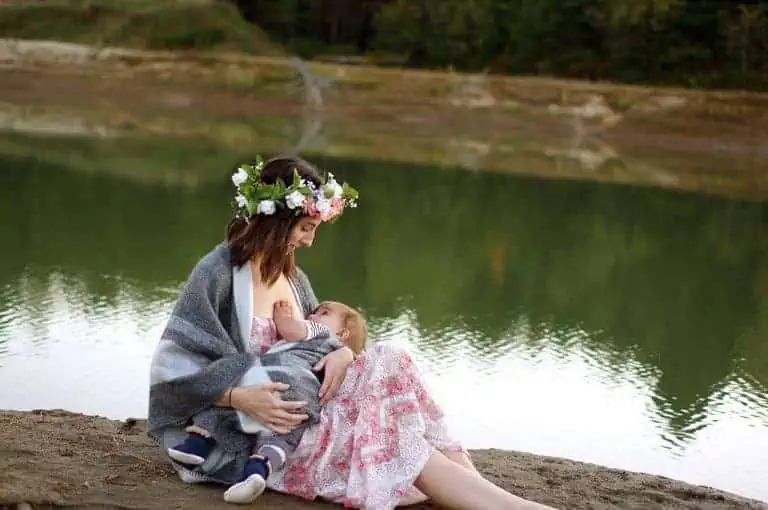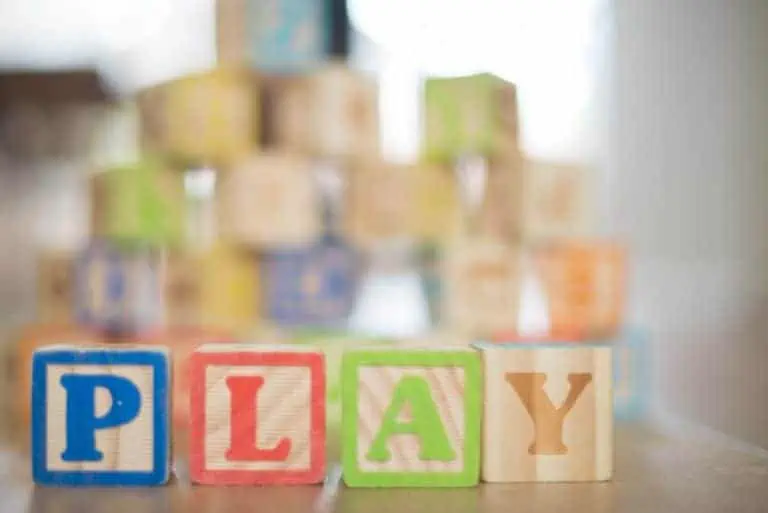The Power of Encouragement: Nurturing Your Child’s Potential
This post may contain affiliate links. As an Amazon Associate, I earn from qualifying purchases.
Parenting can feel relentless. In pursuing our natural desire to give our kids everything they need to thrive, it’s easy to get overwhelmed. Thankfully we all have a tool at our disposal that’s powerful for helping kids flourish: encouragement.
This article will explore why encouragement is so effective and how to incorporate it into our day-to-day life with our kids.
What Is Encouragement?

One of the strongest influences on kids’ growing brains and lifelong ability to handle stress is their relationship with their parents.
According to the Center on the Developing Child at Harvard University: “The single most common factor for children who develop resilience is at least one stable and committed relationship with a supportive parent, caregiver, or other adult. These relationships also…build key capacities—such as the ability to plan, monitor, and regulate behavior—that enable children to respond adaptively to adversity and thrive.” Encouragement is a pillar of the warm, supportive relationship we want to build with our kids.
Encouragement inspires courage, spirit, and confidence. In an often harsh and unforgiving world, encouraging kids is one of the most powerful things we can do.
Researchers from DeMontfor University have found that children who receive praise five times a day are better behaved, calmer, and more focused than their peers. Instilling confidence through encouragement is foundational to nurturing positive, responsive children.
Parental encouragement is like tending a cozy fire that warms children’s hearts and lights their way. When we express our faith in them to do well, we blow away doubts and fears. We fuel their inner fire with kind words and loving gestures, building their confidence and resilience to push through new challenges.
So how do we use kind words and loving gestures to encourage our kids? Let’s take a look.
Ways To Encourage Using Words

Just a few words of encouragement can make a big difference in a child’s life. Long after someone is gone, we carry their words with us. The positive phrases they used to encourage us play in our memories. Our words become part of our children’s inner worlds, which makes focusing on regularly providing encouragement powerful.
Encouragement is different than compliments or flattery. Flattery often feels like insincere praise spoken to benefit the person giving it—compliments, even when sincere, are often still about the preferences or feelings of the compliment giver.
For example, my 12-year-old was confused recently by a teacher’s compliment because the teacher told them, “I’m so happy about your participation in math class!” The praise, while sincere and well-meaning, fell flat with my kid because it was about the teacher’s happiness. The subtext my child felt was ‘do things to make the teacher happy,’ which isn’t quite the ‘do things to enrich your learning’ effect he was going for.
Encouragement focuses on effort, improvement, and the process of learning. We can encourage kids by pointing out specific things they did well in the process of accomplishing a task. You might say: “Great work! You kept going, even when it was challenging; that shows a lot of persistence.”
We can also encourage kids by acknowledging the effort they put into something rather than just the outcome. For instance, “It seems like you put a lot of effort into this project” validates their work, even if the final result was not perfect.
Encouraging The Person, Not The Result

As an International Classification of Functioning, Disability and Health (ICF) ICF-certified coach, I can’t help but bring a coaching lens to the topic of encouragement. Coaches practice giving encouragement based on encouraging the person, not the result. Here’s the difference:
- Encouraging results: “I know you can get your homework done on time and get an A+.”
- Encouraging the person: “Your creativity and writing skills are definitely going to be big assets when it comes to this homework.”
Can you see the difference there? I’m still mentioning the homework in the second example, but instead of focusing on getting a good grade, I highlight specific skills the child can bring to the work. This type of encouragement helps kids think about what they can do to help things go well, reminding them of their own resourcefulness. It recognizes effort and progress without attaching a value judgment to the outcome.
Embracing Mistakes
When we embrace mistakes as part of learning, it encourages exploration and growth. You can ask questions like “What went well?” “What could have gone better?” and “What will you change in the future?”
We can help kids develop a growth mindset by embracing mistakes. The growth mindset, in turn, helps our kids see challenges as opportunities for growth rather than threats to their intelligence or ability.
Ways To Encourage With Loving Gestures
Words aren’t the only way we can encourage our kids. Our actions can speak volumes. Our presence, attention, and connection with our kids foster a bond that lets them know we’re on their side.
Presence
We can encourage kids by being there. Anyone’s personal courage can be increased through the presence of someone who cares.
Think of the times you had to do something scary – and felt a boost of courage as your spouse held your hand or your friend cheered you on. Presence is encouragement simply through being there when things are challenging for our kids – whether they’re having a bad day or facing a new and scary-to-them situation.
Often we don’t need to jump in to “rescue” them; our presence gives them the courage to take action themselves. Being present might look like offering a lap or a hand to hold when they’re getting a shot. For bigger kids, it might be asking, “Do you want me to come with you?” when they’re facing an anxiety-provoking situation like meeting with their teacher.
Listening
Listening deeply to someone encourages by providing emotional support and acknowledgment. When we really listen to someone, our actions say, “You are important and worthwhile.” We can practice being active listeners by:
- Asking genuinely curious open-ended questions
- Avoiding the urge to prompt your child’s response; giving them time to organize their thoughts
- Rephrasing what our child has said to check for understanding
- Looking for the feelings underneath their words without adding our own judgments or advice
Listening to our kids and showing that we understand and empathize with their feelings helps them feel heard and validated. This kind of deep listening builds trust and connection, both essential for strong relationships and the sense of well-being and capability that comes from them.
Connection Time
Building connections by spending quality time with your child can involve chatting, acknowledging their feelings, and exploring their interests. This kind of focused attention encourages children to be curious, ask questions, and share their thoughts and feelings.
Giving them undivided attention can also help them develop self-awareness and emotional intelligence, essential skills for navigating the world around them.
Goal Setting
We can also encourage kids by helping them set achievable goals and celebrating progress towards those goals. When children feel their efforts are recognized and valued, they are more likely to believe in themselves and their abilities.
Recognition and Celebrations
Encourage your child by showing appreciation for their efforts and successes, and celebrate life’s milestones, big or small. What makes your child feels loved and appreciated?
Acknowledgment can be publicly made if your child likes it or with a simple, private note to recognize their accomplishment. The important thing is matching the celebration style with the child.
You can celebrate milestones in simple ways. Give a small gift or flowers, hang up a banner, make a toast at dinner, text a grandparent, or let your child overhear you bragging to a friend. It doesn’t have to be elaborate!
Leading by Example
Another way to encourage your child is to model positive behaviors and attitudes. Children learn by example, so they notice when you treat others with respect, take responsibility for your actions, and maintain a can-do attitude!
Children also notice role models in their world. You can share encouragement and inspiration by reading stories about people overcoming obstacles, showing kindness to others, or using creativity and collaboration to solve problems.
Trusting
And finally, showing trust in your child is encouraging; this means allowing them to make choices and take risks within reasonable limits. When we believe in our kid’s capability to make good decisions and give them the autonomy to act on those decisions when possible, it shows we trust them. Trusting your child helps them to feel competent and capable, building resilience.
Conclusion
Encouragement doesn’t have to be complicated or grandiose. We can nurture children’s potential and build strong, resilient relationships by being present, using positive language, recognizing accomplishments, and giving focused time.
It’s important to remember that encouragement is not the same thing as flattery. Encouragement is about offering support, acknowledging effort, and helping kids build the skills, self-confidence, and resilience they need to thrive.
By practicing these techniques, we can help our kids grow and develop into courageous, compassionate, and capable adults equipped to handle whatever life throws their way.
This article originally appeared on Wealth of Geeks.







